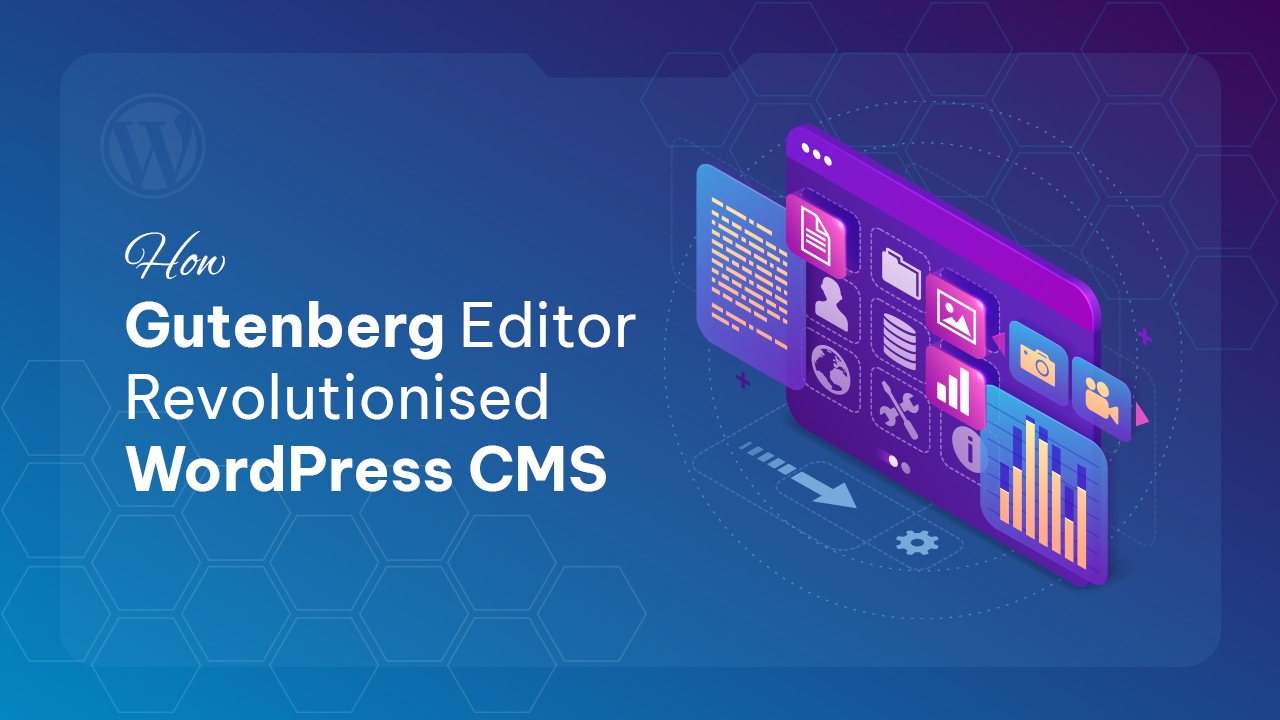WordPress is the most widely used content management system (CMS) in the digital landscape. With the limitations of the traditional WordPress CMS, the classic editor, the need for a seamless, intuitive, and creative content creation process birthed the Gutenberg Editor.
But what exactly is the Gutenberg editor and how did it change WordPress’ outlook? The editor was launched as part of WordPress 5.0, replacing the single-text classic editor.
In this article, we’ll explore how Gutenberg positioned WordPress for growth and upscaled its outlook. We’ll conclude with how our Raleigh WordPress Development Company, cmsMinds, can help businesses develop custom websites to suit the needs of businesses.
How Gutenberg Block Uplifted WordPress Outlook
Every content creator who started a career not less than three years ago must be familiar with the WordPress classic editor. This editor was WordPress’ default CMS for several years. It was characterized by the ThyMCE editor that supported mainly text and basic audio-visuals.
Creators often attested to the simplicity of the classic editor, especially for minor content creation. However, the editor was soon faced with limitations and criticisms, all of which were eminent as the digital landscape evolved.
Challenges of the classic editor centered on limited support for audio-visual content, limited layout, and non-customizable features. This essentially hindered creators who were looking for a better platform to express their skills, not just for text.
The fifth update of WordPress gave rise to the Gutenberg editor which is characterized by block layering. Let’s further see how the Gutenberg block editor provided a better experience.
Unveiling of the Gutenberg editor for better CMS experience
Web content has massively evolved in the last decade. Despite the abundance of multimedia media content, blogs, and dynamic designs, something has remained constant – people appreciate a great and interactive user experience. This and increased competition and solutions were part of the reason WordPress needed to upscale.
In 2017, Matt Mullenweg, the co-founder of WordPress proposed the idea of developing a new editor with a block layout which the community agreed to. A team of developers and contributors championed the development of the Gutenberg block project. A roadmap for the integration of Gutenberg into WordPress was outlined.
Gutenberg editor was officially launched in December 2018, replacing the classic editor. It was characterized by a block-based outline – each paragraph, heading, image, and video had separate blocks. This editor empowered creators to resize and style their content, elevating their creative side.
Gutenberg Editor – Positioning WordPress for Growth
The value of WordPress has significantly increased since the release of the Gutenberg editor. Since December 2018, the Gutenberg block editor (WordPress 5.0) has been updated twice. WordPress 5.0, 5.1, and 5.2 have recorded over 36 million downloads, representing around 50% of all the CMS versions.
Gutenberg has significantly transformed the WordPress CMS, with the block editor being successfully installed and used by millions of websites. Additionally, WooCommerce, a plugin used by online vendors, is only supported on Gutenberg.
Several features of the block editor have silently made it “the creators’ favorite.” Some of these features include:
- The custom paragraph: The paragraph comes with some exciting features such as the background color, font size, drop caps, and text styles which can be customized when editing.
- Unique image and media layout: With several layout options, creators can always toggle between them to see which works perfectly. Other features such as size and dimension, percentage ratio, alternative text, caption, positioning, etc can also be personalized during editing.
- Tables: Inserting tables into the classic editor is challenging, even with HTML. However, inserting tables is a lot easier with the block editor. You don’t need to have coding skills to insert or remove table rows and columns.
How Gutenberg Editor is Revolutionizing WordPress CMS
The Gutenberg editor has been revised twice and we hope to see another upgrade soon. The current functionality has transformed the face of WordPress and the next upgrade could bring about a total revolution.
Let’s see some ways the Gutenberg block editor has revolutionized WordPress.
Asynchronous collaborations on WordPress
Editors can now have a seamless workflow by collaborating on WordPress and this is enhanced by the Gutenberg block. Just like Google Docs where a small team can contribute to developing a content piece, WordPress now exhibits the same functionality.
The upside of this feature includes:
- Enhancing editorial workflow by reducing reliance on third-party collaboration tools, allowing the entire process to be completed on WordPress.
- Allowing editors and contributors to comprehensively review all content blocks including text, multimedia, and call to action, and leave feedback or directly edit.
- Simplify all review and editing cycles without wasting time on what needs to be sorted.
- Avoiding formatting shortfalls as all editing is done on the Gutenberg block that has unique formatting features.
- Data security and organization as access to the content on Gutenberg editor can be restricted to just a few trusted entities.
User experience and creativity
As the digital ecosystem advances, businesses now rely on dynamic designs to tell their brand stories. This helps them stay ahead of the curve and beat the competition.
The Gutenberg block editor has unique multimedia layouts and customizable options that businesses can explore to show their creative sides.
Get a Custom WordPress Website for Your Business From cmsMinds
In this era of seamless content creation, businesses can now leverage the various WordPress blocks to create unique posts, blogs, and photo albums. The text-based blocks and multimedia layouts can further enhance brand identity. Both tech-based and non-technical businesses and creators can experience the seamlessness and versatility of the Gutenberg editor.
With the WordPress CMS, businesses can get the perfect websites and create block content that aligns with their brand identity and specific needs. Businesses can also have access to the array of exciting themes and plugins that are highly compatible with the Gutenberg editor.
Our Raleigh WordPress Development Company, cmsMinds, has positioned a team of technical experts to ensure businesses reach their potential by building custom websites to tell their stories.
To know more about WordPress Blog Editor – Here is the guide.



